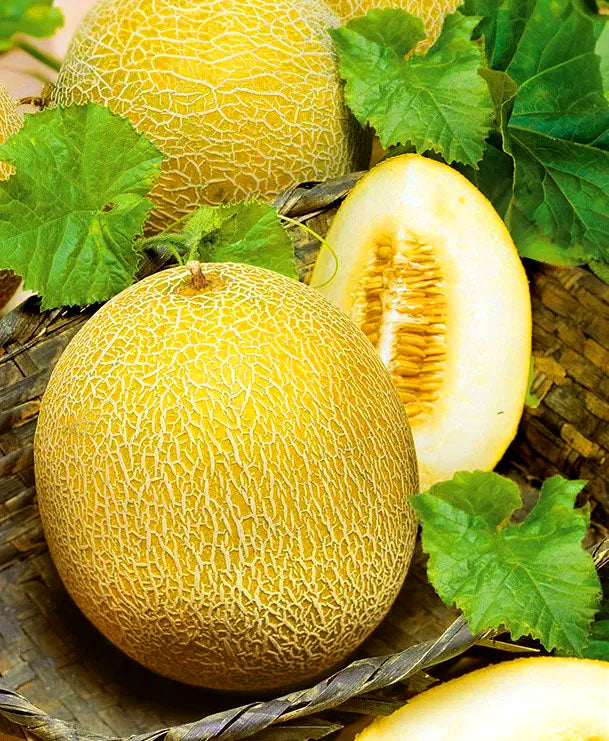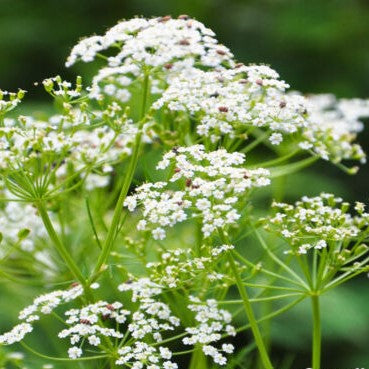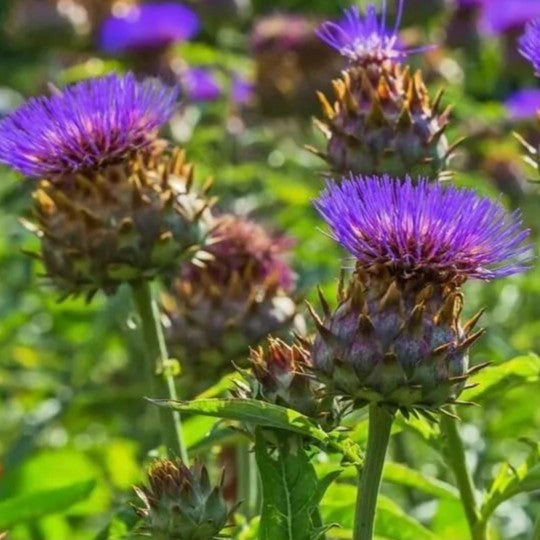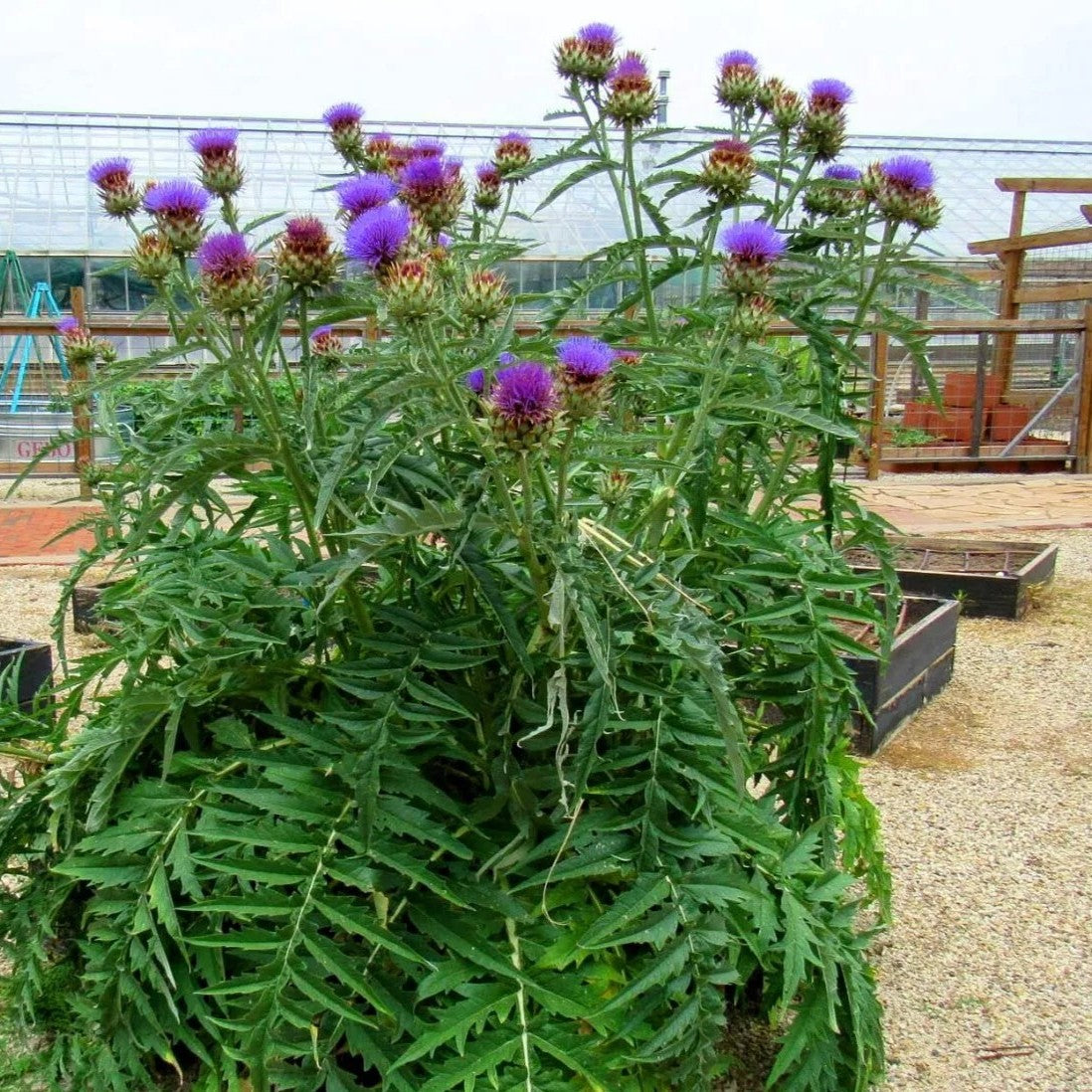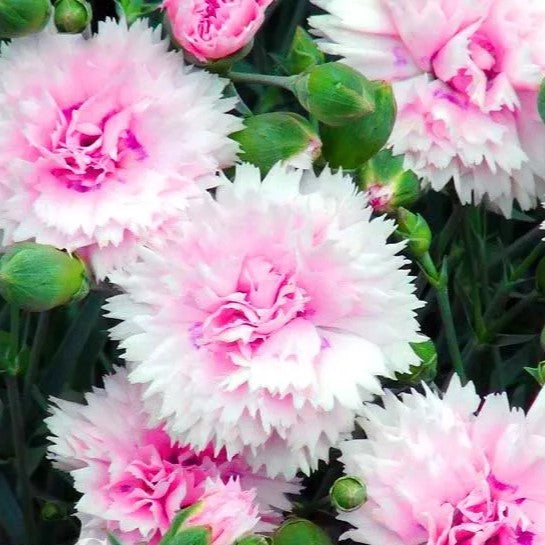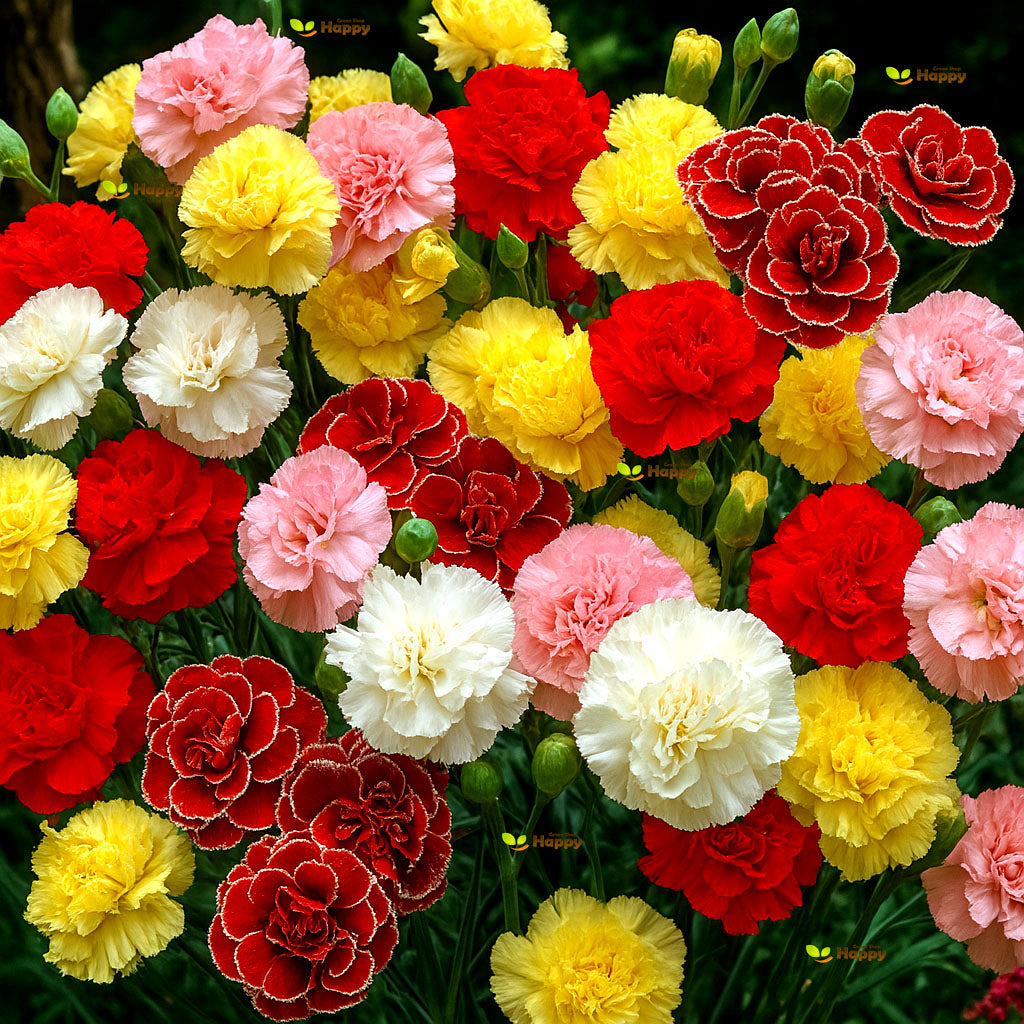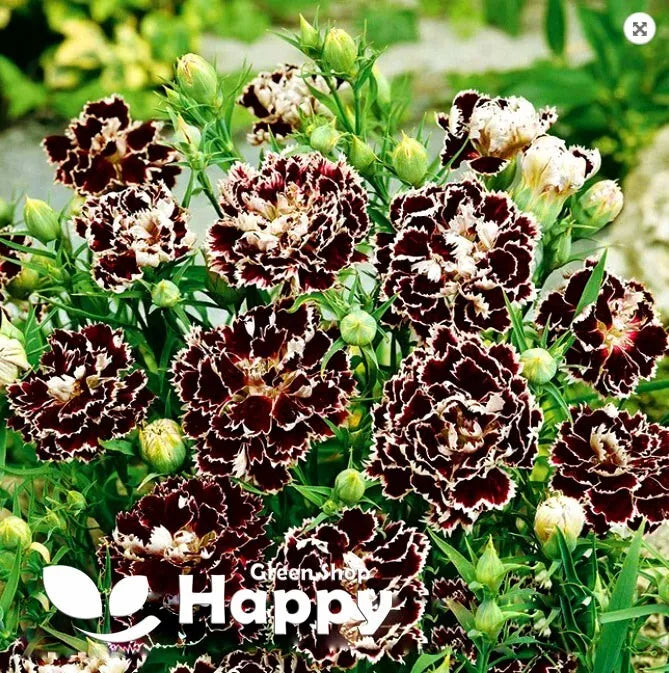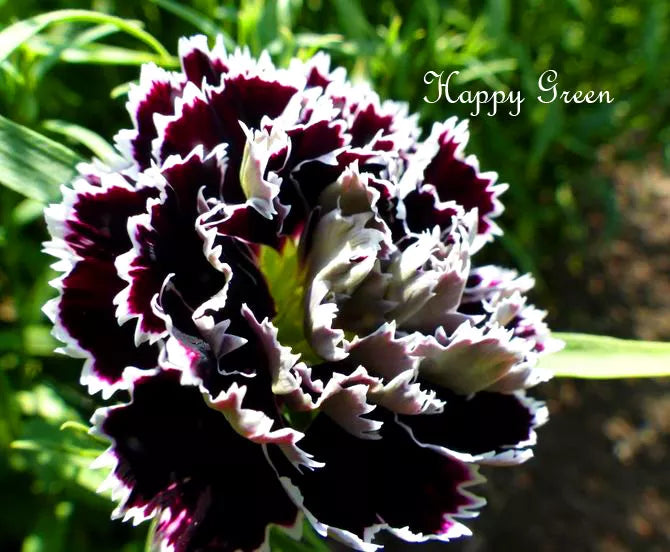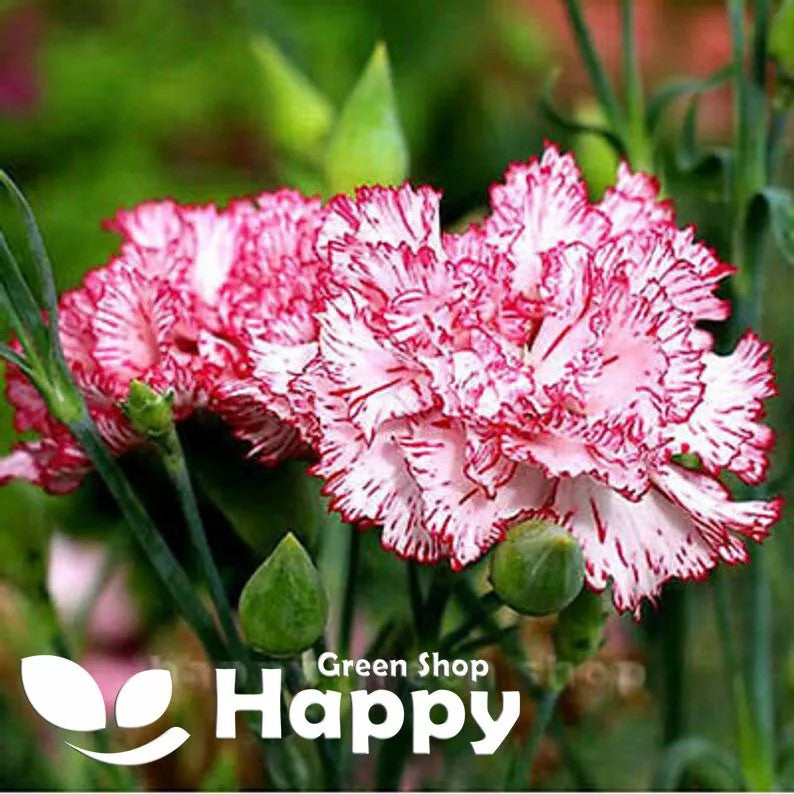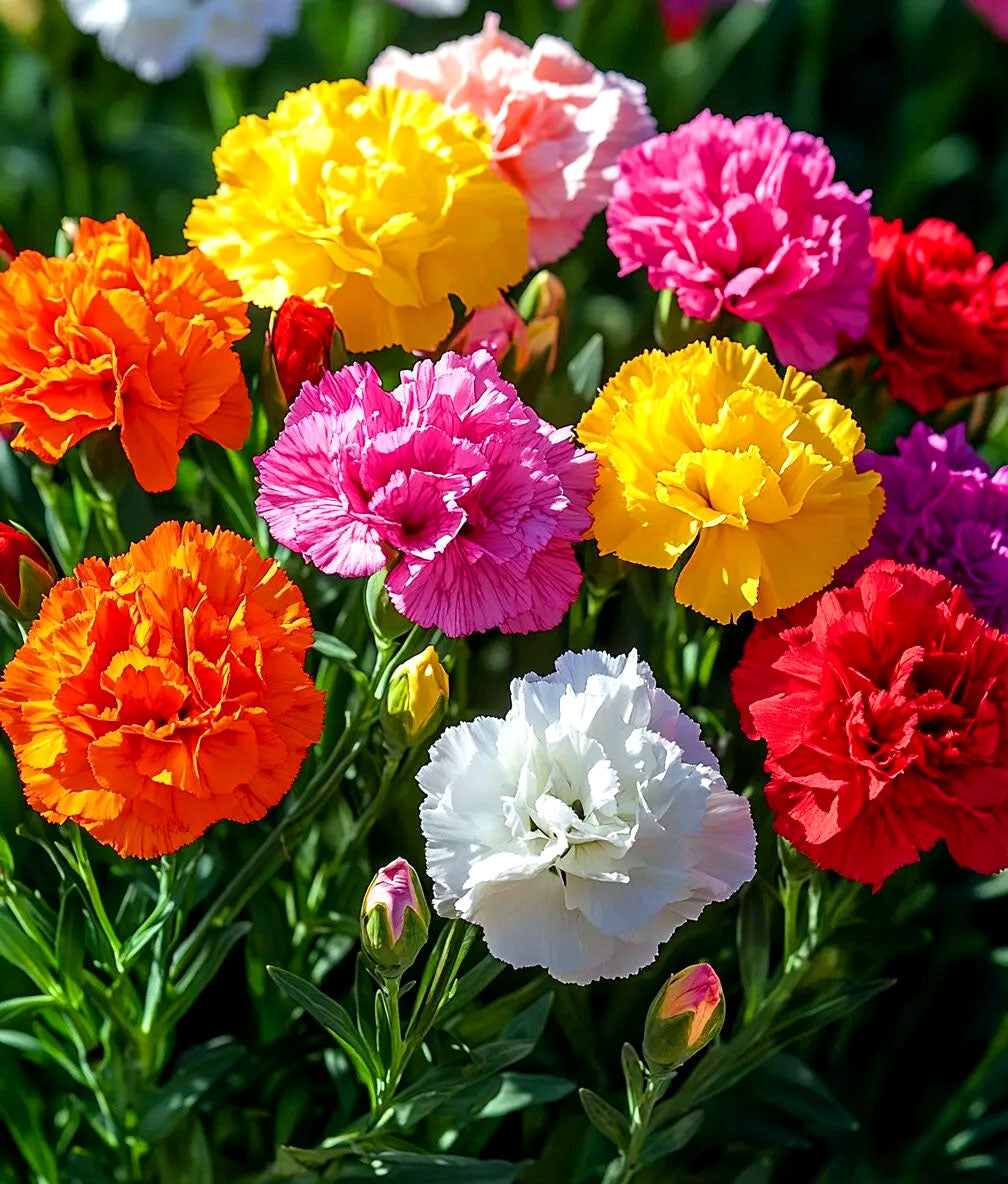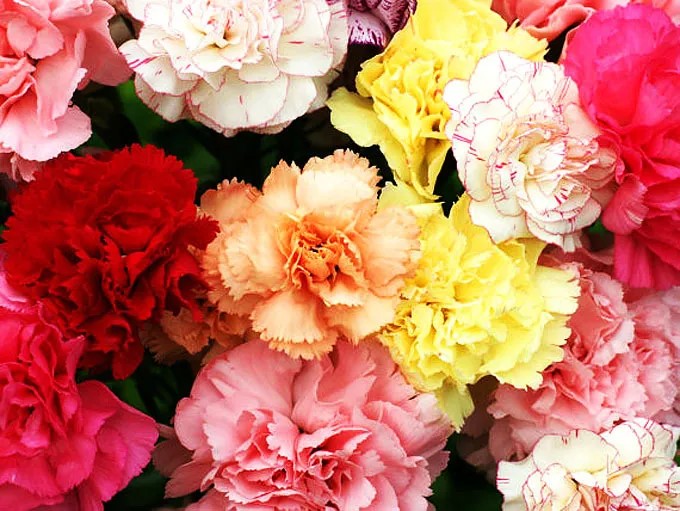Sort by:
1113 products
1113 products
Caraway Seeds (Carum carvi)
Grow aromatic, versatile seeds with Caraway (Carum carvi). This hardy biennial herb produces feathery green foliage and crescent-shaped seeds with a warm, slightly sweet flavor, perfect for bread, cooking, and herbal remedies. Easy to grow, it’s ideal for herb gardens, kitchen beds, and pollinator-friendly plantings.
How to Grow
-
Sow seeds directly outdoors from early spring to early summer.
-
Use fertile, well-drained soil in full sun.
-
Sow seeds 0.5–1 cm deep and thin seedlings to 20–25 cm apart.
-
Keep soil consistently moist for germination (10–20 days).
-
Harvest seeds in late summer when the seed heads turn brown; cut and dry them for storage.
Key Features
-
Feathery green foliage and aromatic crescent-shaped seeds
-
Biennial, hardy, and easy to grow
-
Ideal for baking, cooking, and herbal remedies
-
Attracts pollinators and enhances garden biodiversity
-
Suitable for herb gardens, kitchen beds, and companion planting
Ideal For
-
Herb gardens and kitchen beds
-
Baking, cooking, and spice blends
-
Pollinator-friendly gardens
-
Homegrown culinary and medicinal use
Sowing
-
Best time: Early spring to early summer outdoors
-
Depth: 0.5–1 cm
-
Spacing: Thin to 20–25 cm apart
-
Prefers full sun and fertile, well-drained soil
Quick Tip
-
Harvest seeds when seed heads are fully brown and dry them in a warm, airy place for long-term storage.
CARDOON SEEDS (Cynara cardunculus)
A striking architectural plant, Cardoon brings dramatic height and bold texture to the garden. With tall, silvery-grey foliage and large thistle-like purple blooms, it makes an impressive focal point in borders and ornamental plantings. Closely related to the globe artichoke, cardoon is also valued as an edible plant, with its blanched leaf stalks enjoyed as a Mediterranean delicacy.
Why Grow "Cardoon"
-
Bold, architectural plant for dramatic garden displays
-
Stunning purple thistle-like flowers loved by pollinators
-
Silvery foliage adds unique texture
-
Edible stems prized in Mediterranean cuisine
Key Features
-
Type: Perennial (Cynara cardunculus)
-
Height: 150–200 cm
-
Flowering: Summer (July–September)
-
Position: Full sun
-
Uses: Borders, architectural displays, edible gardening, pollinator-friendly
Ideal For
-
Adding dramatic height and texture to borders
-
Pollinator-friendly and wildlife gardens
-
Edible gardening with a Mediterranean twist
-
Cottage and ornamental gardens
Sowing & Growing
-
Sow indoors: 6–8 weeks before the last frost
-
Sow outdoors: After frost danger has passed
-
Germination: 14–21 days
-
Space seedlings: 90–120 cm apart
-
Prefers full sun and rich, well-drained soil
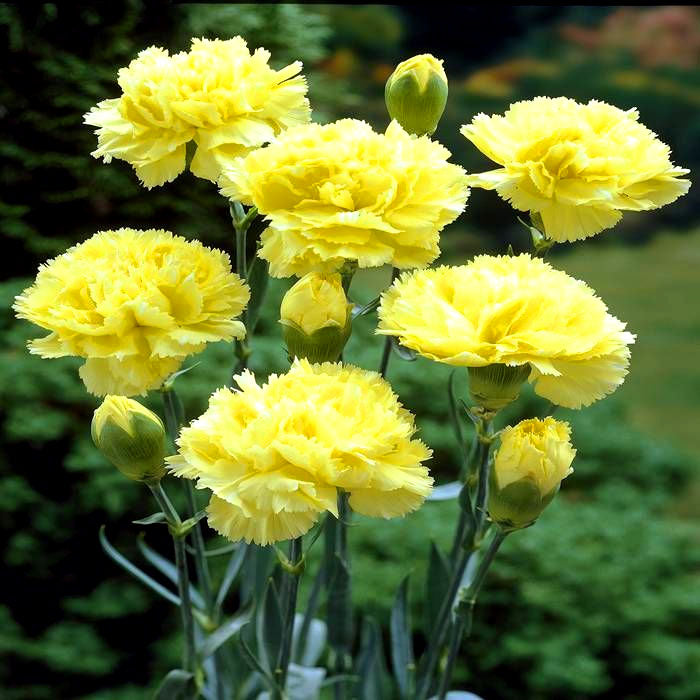
Carnation 'Marie Chabaud' - 350 seeds (Dianthus caryophyllus) Cutting Flower
£1.15
Unit price perCarnation 'Marie Chabaud' - 350 seeds (Dianthus caryophyllus) Cutting Flower
£1.15
Unit price perCarnation ‘Marie Chabaud’ Seeds (Dianthus caryophyllus) – Cutting Flower
Bring classic elegance to your garden with Carnation ‘Marie Chabaud’ (Dianthus caryophyllus). This hardy annual produces large, fragrant blooms in soft pink shades, perfect for cutting gardens, borders, and containers. Long-flowering and easy to grow, it’s ideal for fresh bouquets and floral arrangements.
How to Grow
-
Sow indoors 8–10 weeks before the last frost or directly outdoors after frost risk has passed.
-
Use well-drained, fertile soil in full sun.
-
Lightly cover seeds with soil and keep moist until germination (10–14 days).
-
Transplant seedlings when large enough to handle, spacing 20–25 cm apart.
-
Water regularly and remove spent flowers to encourage continuous blooming.
Key Features
-
Large, fragrant blooms in soft pink shades
-
Long-flowering, ideal for cutting gardens
-
Hardy and easy to grow
-
Perfect for fresh bouquets and floral arrangements
-
Attracts pollinators including bees and butterflies
Ideal For
-
Cutting gardens for fresh flowers
-
Flower beds, borders, and containers
-
Pollinator-friendly gardens
-
Floral arrangements and bouquets
Sowing
-
Best time: 8–10 weeks before last frost indoors or after frost outdoors
-
Germination: 10–14 days
-
Sow thinly, cover lightly, and keep soil moist
-
Prefers full sun and fertile, well-drained soil
Quick Tip
-
Regularly deadhead to prolong flowering and maintain healthy, vibrant blooms throughout the season.
Carnation ‘Sonata’ Mix Seeds (Dianthus plumarius)
A fragrant and colorful perennial, Carnation ‘Sonata’ Mix produces elegant, double blooms in shades of pink, red, and white. Compact and hardy, it’s perfect for borders, rock gardens, and containers, offering long-lasting color and sweet fragrance from late spring through summer.
What Makes It Special
-
Fragrant, double blooms in a mix of pink, red, and white
-
Compact, hardy, and ideal for borders, rock gardens, and containers
-
Long flowering season with vibrant, eye-catching colors
Key Features
-
Botanical name: Dianthus plumarius
-
Hardy perennial
-
Height: 15–20 cm (6–8 in)
-
Bloom time: Late spring to summer
Ideal For
-
Borders, rock gardens, and container plantings
-
Fragrant and colorful garden displays
-
Edging and small garden spaces
Sowing
-
Sow indoors Feb–Apr or outdoors Mar–May
-
Cover lightly with soil and keep moist
-
Germination: 14–21 days at 15–20°C
-
Thin seedlings 15–20 cm apart
-
Flowers in the first or second season after sowing
Carnation ‘Vienna’ – 200 Seeds (Dwarf Vienna, Dianthus caryophyllus)
Carnation ‘Vienna’ (Dianthus caryophyllus Dwarf Vienna) is a charming annual producing compact, fragrant blooms in delicate pastel shades. Its dwarf, bushy habit makes it ideal for borders, rockeries, containers, and patios. Long-flowering and easy to grow, it adds elegance and fragrance to any garden while attracting pollinators.
Why Grow "Vienna"
-
Compact, bushy habit perfect for small spaces
-
Fragrant, delicate pastel-colored blooms
-
Long-lasting flowering from late spring to autumn
-
Attracts bees and butterflies
Key Features
-
Type: Annual (Dianthus caryophyllus, Dwarf Vienna)
-
Height: 20–30 cm
-
Flowering: May–October
-
Position: Full sun to partial shade
-
Uses: Borders, rockeries, containers, patios, cottage gardens
Ideal For
-
Small garden beds and borders
-
Rockeries and container planting
-
Patio displays and window boxes
-
Pollinator-friendly gardens
Sowing & Growing
-
Sow indoors: February–April in seed trays
-
Sow outdoors: April–May after frost
-
Germination: 10–20 days at 18–22°C
-
Thin seedlings to 15–20 cm apart
-
Prefers full sun and well-drained soil
-
Deadhead to encourage prolonged flowering
Carnation Black – Seeds (Dianthus heddewigii ‘Chianti’)
Carnation ‘Black Chianti’ is a dramatic annual with deep, velvety maroon to near-black blooms that make a bold statement in beds, borders, and cut arrangements. Its compact habit, long flowering season, and striking color bring elegance and contrast to any garden. Easy to grow and perfect for adding depth to mixed displays.
Why Grow "Black Chianti"
-
Striking near-black, velvety blooms
-
Compact and easy to grow
-
Long flowering season
-
Great for cutting and arrangements
Key Features
-
Type: Hardy annual (Dianthus heddewigii)
-
Height: 30–45 cm
-
Flowering: June–September
-
Position: Full sun, well-drained soil
-
Uses: Borders, containers, cut flowers
Ideal For
-
Bold bedding schemes
-
Patio containers
-
Cottage and modern gardens
-
Dark accents in floral displays
Sowing & Growing
-
Sow indoors: February–April in trays/pots
-
Sow outdoors: April–June in prepared soil
-
Germination: 7–14 days at 18–22°C
-
Transplant or thin to 20–25 cm apart
-
Remove spent blooms to extend flowering
Carnation Chadbaud ‘Benigna’ – 100 Seeds (Dianthus caryophyllus)
Carnation Chadbaud ‘Benigna’ (Dianthus caryophyllus) is a beautiful, compact annual with soft pink, fragrant blooms. Perfect for borders, rockeries, and containers, it adds elegance and color to your garden from late spring to autumn. Easy to grow and long-flowering, it also attracts pollinators.
Why Grow "Benigna"
-
Fragrant soft pink blooms
-
Compact, bushy growth habit
-
Long flowering period from late spring to autumn
-
Attracts bees and butterflies
Key Features
-
Type: Annual (Dianthus caryophyllus)
-
Height: 20–30 cm
-
Flowering: May–October
-
Position: Full sun to partial shade
-
Uses: Borders, rockeries, containers, patios, cottage gardens
Ideal For
-
Small garden beds and borders
-
Rockeries and container planting
-
Patio displays and window boxes
-
Pollinator-friendly gardens
Sowing & Growing
-
Sow indoors: February–April in seed trays
-
Sow outdoors: April–May after frost
-
Germination: 10–20 days at 18–22°C
-
Thin seedlings to 15–20 cm apart
-
Prefers full sun and well-drained soil
-
Deadhead to encourage prolonged flowering
Carnation Mix Chabaud – Elegant Fragrant Blooms
Carnation Mix Chabaud produces charming, fragrant flowers in a variety of colors. Perfect for borders, rock gardens, and cut flower arrangements.
What Makes It Special
-
Delightfully fragrant blooms
-
Variety of vibrant colors
-
Long-flowering and easy to grow
-
Ideal for fresh bouquets and garden charm
Key Features
-
Annual or biennial plant
-
Grows 30–50 cm tall
-
Blooms late spring to summer
-
Thrives in full sun and well-drained soil
-
Compact and bushy growth
Ideal For
-
Garden borders and flower beds
-
Rock gardens and patios
-
Cut flowers and bouquets
-
Pollinator-friendly gardens
Sowing
-
Sow indoors 6–8 weeks before last frost or directly outdoors after frost
-
Plant seeds 0.3–0.5 cm deep
-
Germination: 10–14 days at 18–22°C
-
Space 15–20 cm apart
-
Water moderately and provide full sun
Carrot "Cosmic Purple" – Seeds (Daucus carota) Heirloom
Carrot 'Cosmic Purple' is a stunning heirloom variety known for its vibrant deep purple skin and bright orange interior. Sweet, crisp, and visually striking, it’s perfect for salads, roasting, or fresh snacking. This unique carrot adds color and flavor to your garden and kitchen alike.
Adaptable and easy to grow, it thrives in home gardens, raised beds, or containers, producing tender roots with a distinctive appearance.
How to Grow
-
Sow outdoors: March – July
-
Plant spacing: 5–8 cm between seedlings
-
Row spacing: 25–30 cm
-
Position: Full sun
-
Soil: Loose, deep, well-drained soil free of stones
-
Care: Keep soil moist; thin seedlings to prevent overcrowding
Key Features
-
Heirloom carrot with deep purple skin and orange core
-
Sweet, crisp flavor suitable for salads, roasting, and snacking
-
Easy to grow in gardens, raised beds, or containers
-
Unique and colorful addition to vegetable gardens
-
Open-pollinated, maintaining true-to-type characteristics
Harvest
-
Harvesting period: 70–80 days after sowing
-
Harvest when roots are tender and fully colored for the best flavor.
Short Tip
Thin seedlings early and harvest consistently to encourage straight, uniform roots with rich color.
Showing 180/1113




